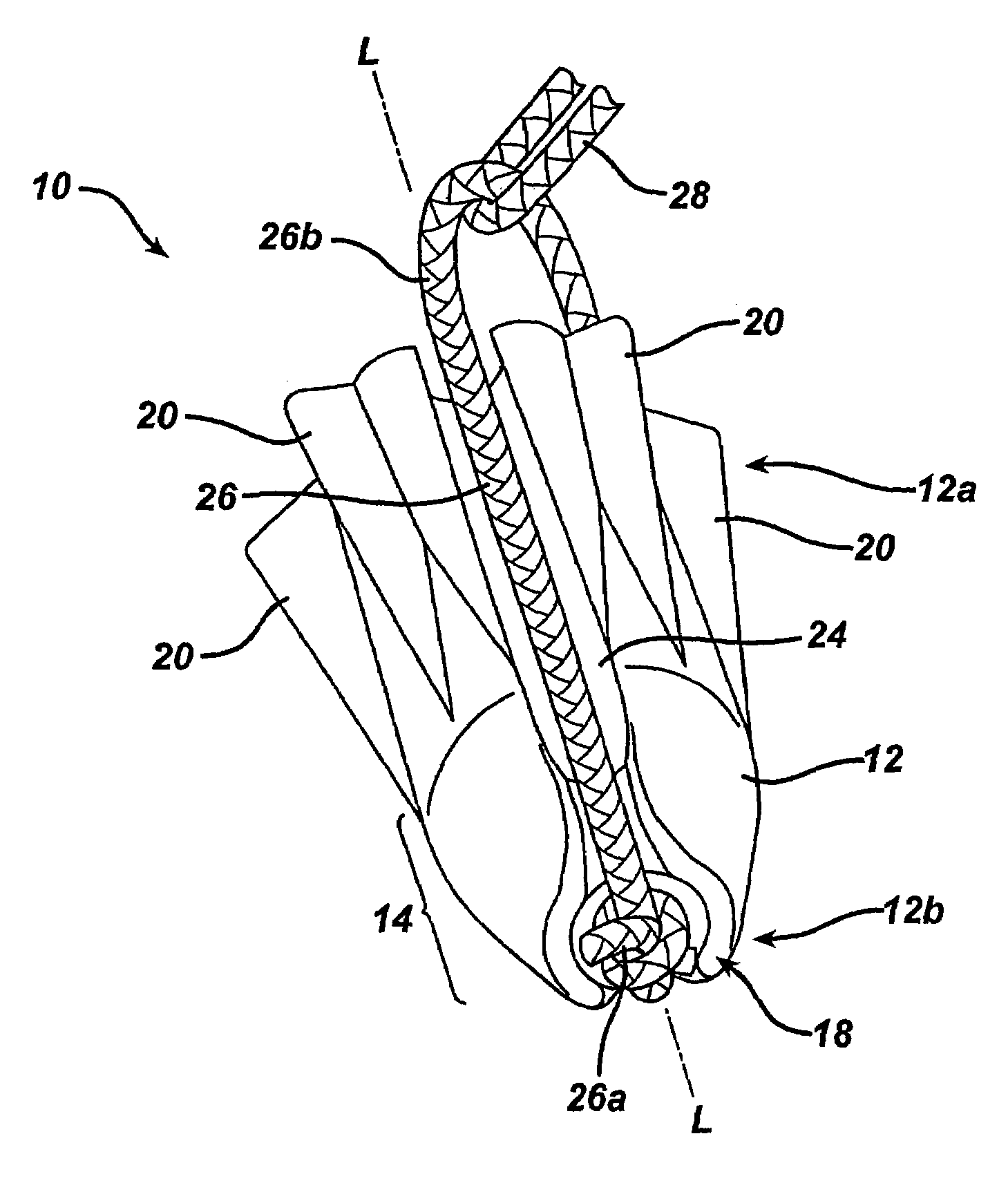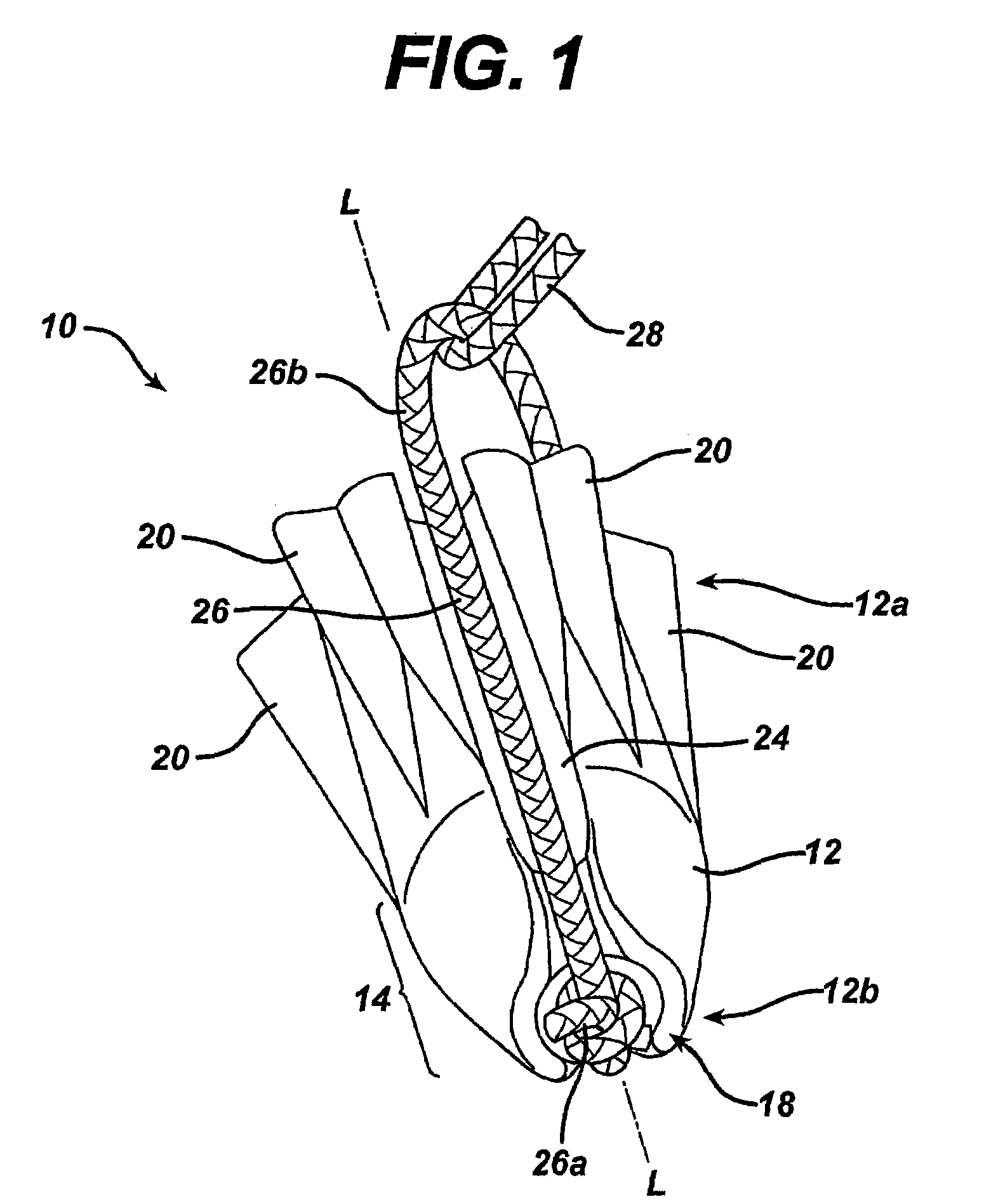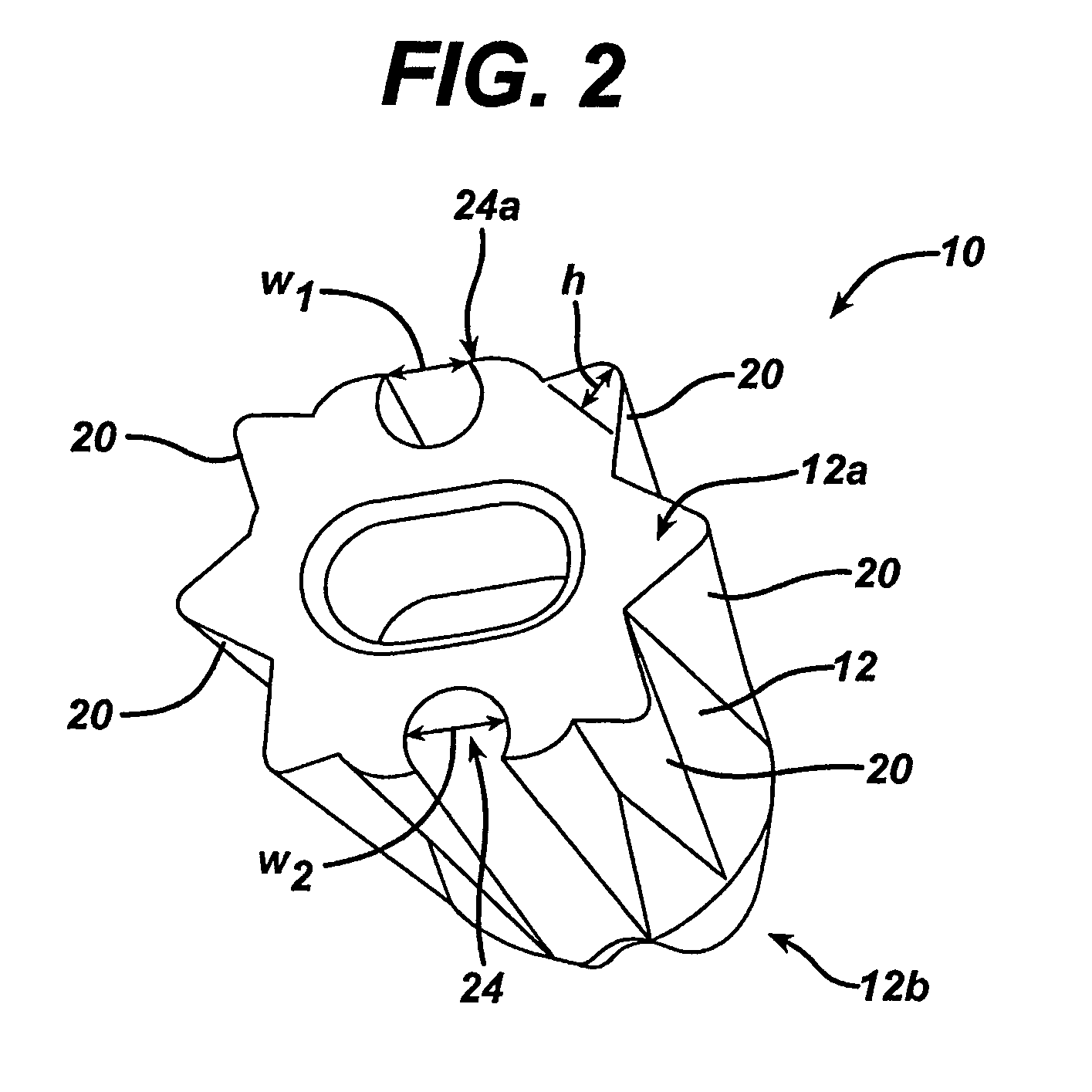Suture loop anchor
a technology of suture loop and thread, which is applied in the field of suture anchors, can solve the problems of disadvantageous movement or twisting of the suture thread, unwanted tangling and knotting, and difficulty or delay in threading the sutur
- Summary
- Abstract
- Description
- Claims
- Application Information
AI Technical Summary
Benefits of technology
Problems solved by technology
Method used
Image
Examples
Embodiment Construction
[0014]The present invention generally provides a suture anchor that includes a body having proximal and distal ends with at least one suture-receiving channel that extends distally from the proximal end of the body. The suture-receiving channel can include a cavity formed in a distal-most end of the body, or it can terminate at a transversely-extending bore formed through the body. The suture anchor can also include a suture loop that is positioned within the suture-receiving channel and cavity or bore, and that includes a proximal portion that extends proximal of the proximal end of the body. In use, an operative suture can be passed through the proximal portion of the suture loop to attach the operative suture to the anchor. This is particularly advantageous in that the operative loop is freely-slidable with respect to the suture loop, thus facilitating attachment and / or positioning of the operative loop with respect to tissue being anchored to the bone containing the anchor. The ...
PUM
 Login to View More
Login to View More Abstract
Description
Claims
Application Information
 Login to View More
Login to View More - R&D
- Intellectual Property
- Life Sciences
- Materials
- Tech Scout
- Unparalleled Data Quality
- Higher Quality Content
- 60% Fewer Hallucinations
Browse by: Latest US Patents, China's latest patents, Technical Efficacy Thesaurus, Application Domain, Technology Topic, Popular Technical Reports.
© 2025 PatSnap. All rights reserved.Legal|Privacy policy|Modern Slavery Act Transparency Statement|Sitemap|About US| Contact US: help@patsnap.com



